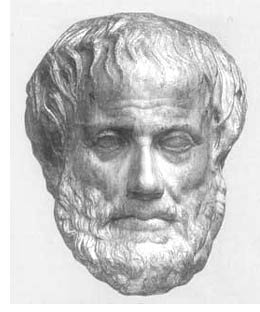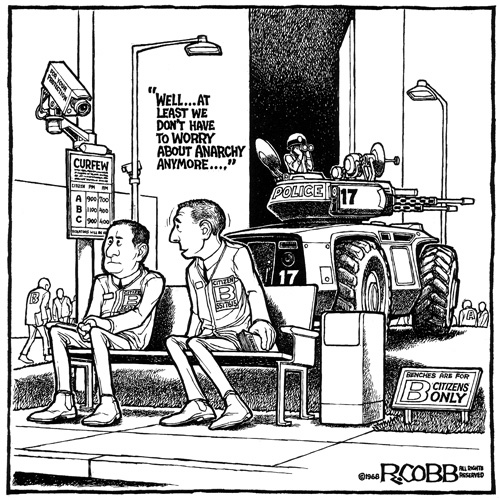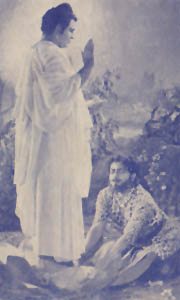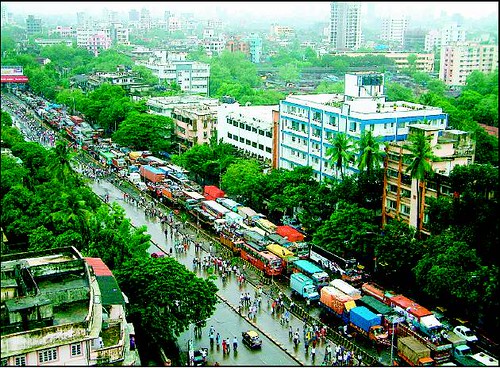
A World Of A Difference
USA, with a population of 30 crores (300 million), has a criminal population of 70 lakhs (7 million) - behind bars, on probation or on parole. US Government estimates a figure of 20 lakhs (2 million) people serving prison sentences.The current status of Indian criminal system is a study in contrast. India, with a population of 110 crores (1100 million) has a prison population of 2 lakhs (0.2 million). The Indian National Human Rights Commission gives a figure of 3.5 lakhs as the prison population - including convicts and those who are undergoing trial. The UK Home Office survey of World Prison Population estimates Indian prison population at 2.5 lakhs.
With less than 25 people per 100,000 in prison India has the world's lowest imprisonment rate. Cynics may snigger at India's 'inefficient' police or the slow court procedures as the cause for this low prison population. That can only mean criminals are at large and India must, therefore have the highest crime rate - which is not true. India has low or average crime rates - based on category.
A police state is the answer ...
The other option is if India had a huge police force. But then, India has the lowest police-to-population ratios in the world. Comparative statistics show,
The police-population ratio in India is very poor at 1:728, it was 1:600 as mentioned by the Home Minister in August 2005 to Parliament, with women constables constituting only 2.5 per cent of that number. The all-India average police-population ratio stands at 122 per 100,000, which is much lower than the UN norm of 222 per 100,000 (1:450). Most western countries have ratios between 250 and 500 per 100,000. Russia has a ratio of 1:82 and Australia 1:439. While Pakistan has a ratio of 1:625, Japan and Singapore have 1:563 and 1:295 respectively. Even developing countries like Thailand with 1:228 have a much better ratio than India.
Guns and crime
Gun ownership has been suspected behind the crime rates in the US. But the most recent argument against this theory is the spate of bank robberies - which dilutes this argument - at least partially. Estimates of the national stock of guns in the US varies between 40 million to 50 million households which own 200 million guns.
India is, in many ways, different. Recent estimates show that India is the second largest gun owning population in the world- with 4.6 crores (46 million) guns. One report report states that UP alone has 900,000 licensed fire arm holders and 1,400 arms dealers. Another report estimates more than 3 lakh illegal firearms in New Delhi alone.
The spectre of Muslim gunsmiths
Muslims gunsmiths dominate this business - as can be seen from these reports. But the Indian Muslim, has like the rest of the country, not used these firearms dangerously. This is a strong argument against the 'oppression of the Muslim in India' argument.
How long would it take to create a religious jihadi militia? That too, at such a low cost.
But what is the question …
Which brings us back to the central question? Is there a causal link between gun ownership and crime? Are these directly related and proportionate?
All the 3 indices (below) create a bias for lawless Indian society and rampant crime. With these three indices, namely: -
- High gun ownership
- Low police-to-population ration
- Low prison population
How can India have such a low prison population, with a poor police-to-population ratio and a crime rate which is not above the average - in spite of a large civilian gun population. The answer goes back to Lipit Ishtar, Hittite laws, Hammurabi et al - 4000 years back in history.
The Roots Of 'Modern Law'
The story of crime and prison population gets more interesting after looking at history and tradition of India and the "Desert Bloc." The 'Desert religions' derive their legal inspiration from the Hammurabic Law of 3000 years.
 Sons Of Hammurabi
Sons Of Hammurabi
Western historians glorified Hammurabi as the world's first law giver - and Occidental-Levantine (including the Shariat) laws are based on Hammurabi's legal code of "an eye for an eye and tooth for a tooth." Of course, the modern state of Israel follows the system of two eyes and all your teeth, if you hurt my one eye.
Hammurabi's laws and edicts were retributive, vengeful and punishment oriented. The focus of Hammurabi's legal system is to give a ‘fitting' counter punishment for a defined offense - even in the face of an alternative data set.
The first followers in the last 3000 years, were the Greeks. With fresh slaves, bought with newly discovered gold, the Greeks took their first few steps in defining a legal systems. Draco started the Greek legal code which set standards in severity and repression - death for stealing an apple or a cabbage. Those convicted of idleness were condemned to death.
Plutarch reports that one contemporary reported that Draco's laws "were written not in ink, but blood." It took Solon, widely travelled in Asia, where Hittite's liberal laws were still in force, to relax Greek laws. Romans continued with these legal practices and termed this legal concept as lex talionis. The Old Testament advocated "an eye for an eye" (Hebrew: עין תחת עין; Exodus 21:23-27). Islam set up the system of Shariat laws on the same pattern.
But not in Indic nations. 4000 years after the Hittites, Gandhiji was asked about the Hammurabi's "eye for an eye" kind of justice. Like the Hittites, Gandhiji rejected Hammurabi's legal constructs. His famous position was "an eye for an eye makes the whole world blind”.
Results & Consequences
The largest prison population in the world is USA, currently at 2 million. The US has more people in prison than the totalitarian regimes of Russia or China. USA also has one of the highest crime rates in the world.
Is there a causal link between the Hammurabic legal systems and the crime it seems to engender.
Massacre & Slavery
Hammurabic legal systems also created, supported, protected the premier slave systems of the world. It is also the same system with a singular record for blood baths and massacres in the history of mankind. This is region and system that gave rise to the three slave religions, Judaism, Christianity and Islam.
The three ‘desert religions', gained their first converts from slaves, but continued with slavery till the 20th century. The 3 ‘desert religions' instead of reforming slave societies, just enabled the transfer of slave titles. Freedom meant old slaves became the new slave masters.
Western history is replete with examples of blood thirsty conquerors whose achievements were measured by territorial conquest, loot and slave capture.
The Hittite Legal System
The Hittites, Mittanis and Elamites (using Indo-Dravidian languages) were Indo Aryans who dominated Asia from Indian borders to European borders till 500 BC. Kassites, the other major ruling clan in Levant’s geography (apart from the Egyptians) heavily adopted Indo Aryan cultural motifs.
The Indic (Hittite) legal revolution 4000 years ago plays out even today.
The Indic Bloc
Gautama Buddha won his spurs after converting daaku "Angulimal." Daaku Angulimal was a notorious criminal - who severed thumbs of his victims, as mementoes from many murders. During his encounter with Buddha, the Daaku was left standing and powerless - only to give up his ways.
Gandhiji and the Calcutta Riots
Commandent of Moradabad, Lt. Col. Coke, wrote in 1822:
"Our endeavour should be to uphold in full force the (for us fortunate) separation which exists between the different religions and races, not to endeavor to amalgamate them. Divide et Impera should be the principle of Indian government."

Cut to Gandhiji during the Calcutta riots. Gandhiji met Hindu and Muslim leaders (and gangsters). Riots ceased. The effect of this came to be known as the Calcutta Miracle. After bloody riots, people came forward to lay down arms. Gandhiji, in an encounter with a sobbing rioteer who confesses to killing a Muslim child - in a revenge killing. Gandhiji suggested that as repentance, the rioteer adopt and raise a Muslim orphan child.
The Age Of Dacoits
Dacoity is a uniquely Indian-English word - made, formed and used in India. Derived from the Hindi word daaku, Dacoits were (and are) outlaws operating at the periphery of legitimacy - and morality. These brigands were a response to the shrinking opportunity base due to colonial practices (some of which continue) in India. These dacoits typically did not usually target the State itself or the poor.
 Many successful films were made revolving around these dacoits. Sunil Dutt built his career around dacoit films like 'Mujhe Jeene Do' and 'Praan Jaye Par Vachana Na Jaye'. 'Mera Gaon Mera Desh', a pioneering dacoit film, made Dharmendra and Vinod Khanna into super stars. 'Sholay', an all time big hit centered around a dacoit running amok - with a powerless State.
Many successful films were made revolving around these dacoits. Sunil Dutt built his career around dacoit films like 'Mujhe Jeene Do' and 'Praan Jaye Par Vachana Na Jaye'. 'Mera Gaon Mera Desh', a pioneering dacoit film, made Dharmendra and Vinod Khanna into super stars. 'Sholay', an all time big hit centered around a dacoit running amok - with a powerless State.
The target of the dacoits were the beneficiaries of the system - the rich. Since, the dacoits did not directly challenge the might of the State, the state was not very worried about these dacoits. But loot, these dacoits did. Especially the rich. In the 1960-1970s, dacoity had acquired fearsome proportions. Large swathes of some Indian states were beyond the pale of law - and authority.
Jayaprakash Narayan And Sampoorna Kranti
Post-colonial India was gradually reconstructing its economy. The building blocks of a competitive economy were being put in place. Shortages, inflation were endemic. In such an atmosphere, dacoits started acquiring overtones as a sign of a 'failing' Indian state.
One man stepped forward and made these daakus see sense. In April 1972, 500 of these dacoits surrendered to the State. These murderous dacoits surrendered at the appeal of a man who never held any office of power (or pelf). Jayaprakash Narayan was the man, at whose behest these Chambal daakus surrendered. Some of these dacoits became members of the Indian Parliament. Jayaprakash Narayan, who at one time, was seen as second only to Nehru, gave up electoral politics in 1954 and worked on the Bhoodan movement with Acharya Vinoba Bhave.
Criminals In The Indian Parliament
For the last 10 years, more than 20% of the elected representatives in national and state parliaments had criminal charges pending against them. In some cases, the charges were petty and manufactured by political rivals. Reality is, that there are criminals in Indian Parliaments. Some criminals like Shahabuddin were, of course, less elected and more manipulated into the Parliament.
Typically, India baiters revel in this and Indians are concerned about this. But, not The Indian Voter. He is unwilling to demonize candidates with a criminal record. The Indian Voter seems to definitely ambivalent about the criminal record of some of the candidates.
Interestingly, (and importantly) how does the Indian Criminal respond to this ambivalence and ‘softness' - one can even call it an act of faith?
Mumbai -July 26th 2005
944 mm of rains in a matter of 4 hours. It was the single largest downpour in the last 100 years of weather records in the world - over an urban agglomeration. No city in recorded history has received so much rain.
Mumbai was paralysed. Communications lines went down. Electricity black outs engulfed parts of the city. On the arterial road across the Mumbai (the Western Express Highway), thousands of cars were marooned and abandoned by owners. Of these hundreds were BMWs, Mercedes-Benz, Honda Accents, SUVs like Pajeros, Landcruisers - abandoned on the roads. It took the city 4 days to recover. For three days, Mumbai was at standstill.
 Criminals, technically, had a free run of the city. Much like New Orleans after Katrina. Vandalism, rape, pilferage could have easily happened.
Criminals, technically, had a free run of the city. Much like New Orleans after Katrina. Vandalism, rape, pilferage could have easily happened.
Just the wipers, door handles, car tyres, headlights, car stereos from these high end cars would have yielded around Rs.25,000-Rs.50,000 (US$600-US$1200) per car in the 'grey market' - attractive targets for criminals during these 3 days.
How many of these cars were, finally, vandalized? None. No such incident was (at least) reported. Unlike New Orleans and Katrina where the National Guard had to be called out. How many women were raped?
None reported - but spontaneously, many Mumbaikars set up free tea stalls for the stranded. Strangers sheltered stranded people at their homes. Of course, there have been posts that Katrina reports were exaggerated and unsubstantiated.
 Criminal As A Human
Criminal As A Human
It is this non-vindictive treatment of the criminal through myth and example, in ancient and modern time that has differentiated exercize of authority in India and handling of the criminal. It is this treatment that makes India and the Indian criminal different.
Modern econometric modelling has an interesting perspective on Indian economy where research shows that for much of the last 1000 years, India has been a significant economic power till the 1900. China and India, this analysis estimates, for the last 1000 years, accounted for 50% of the world economy. Statistical analyses showed India with a world trade share of 25% for much of the 500 years during 1400-1900.
With this prosperity, the most interesting (historical) aspect of the criminal management story is the absence of any surviving mass jails in India prior to colonial India. Just how did pre-colonial India, one of the largest (and most prosperous) populations of the world, deal with crime and criminals?

No comments:
Post a Comment